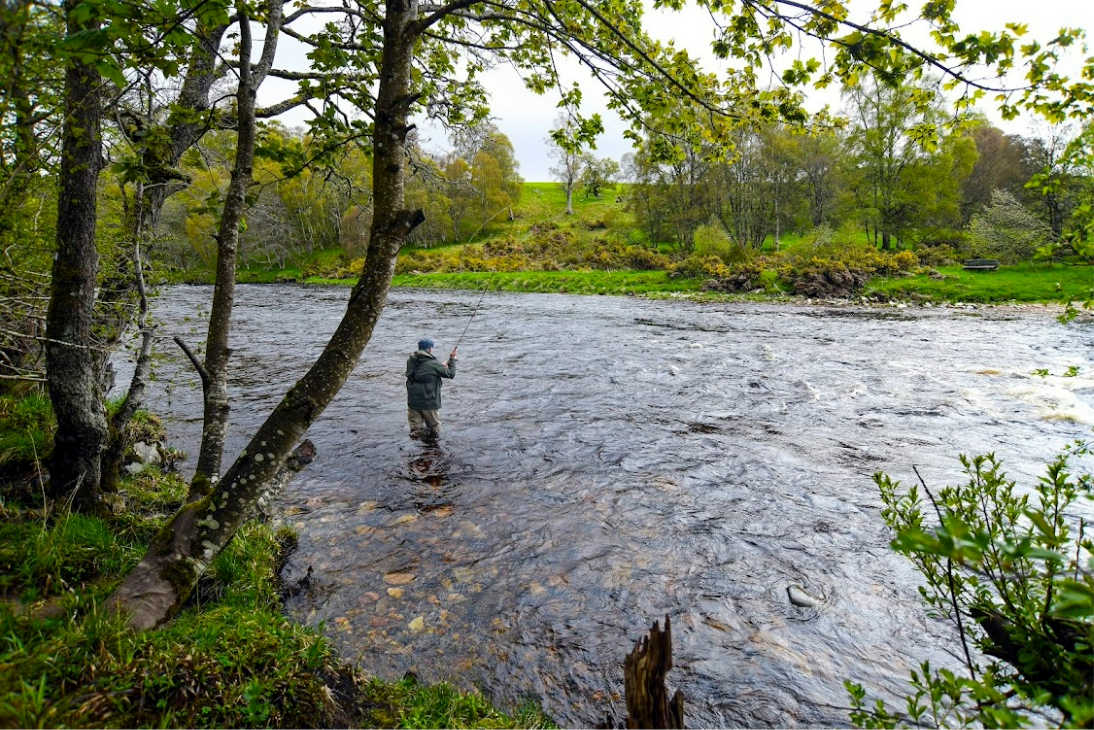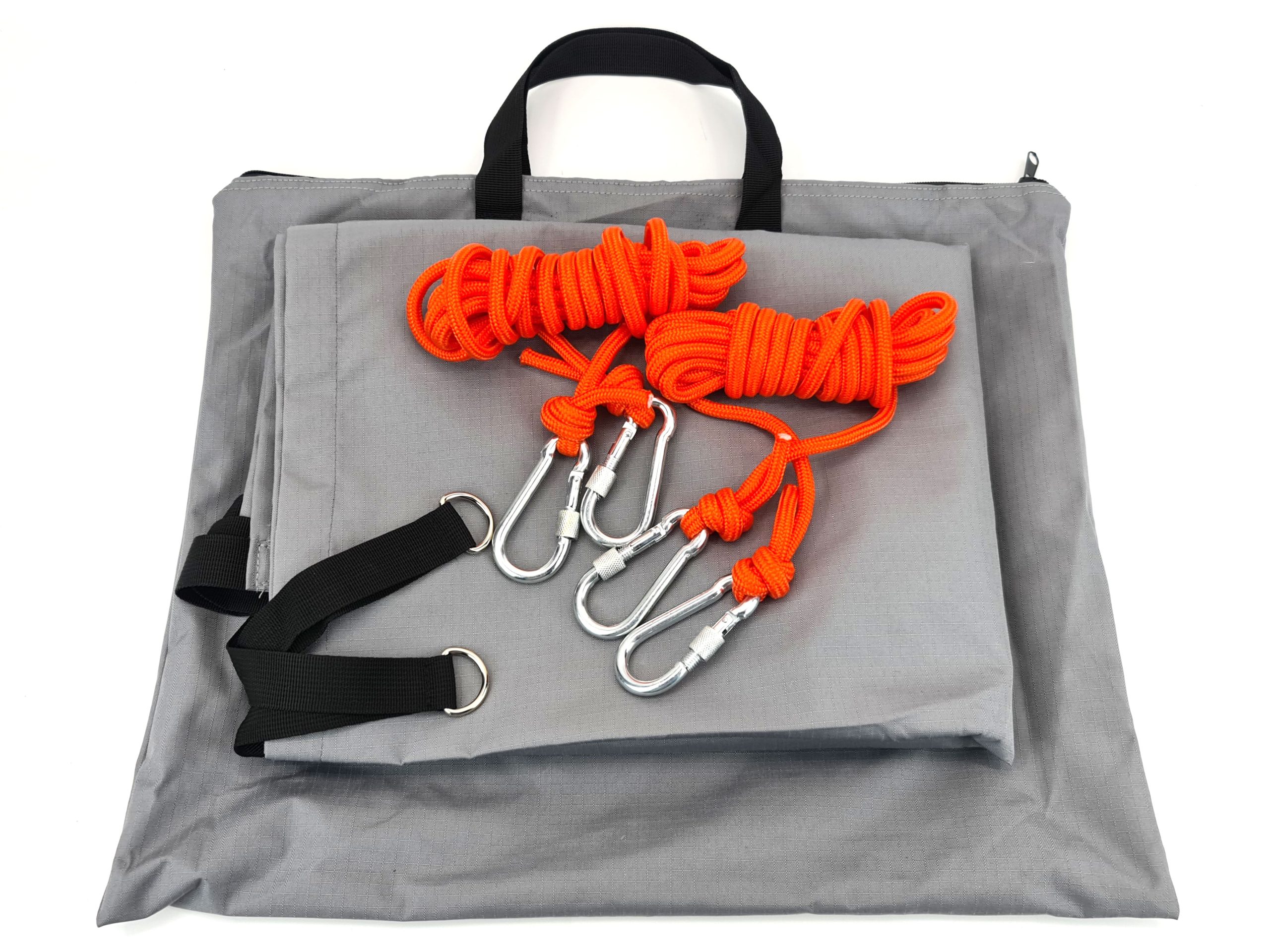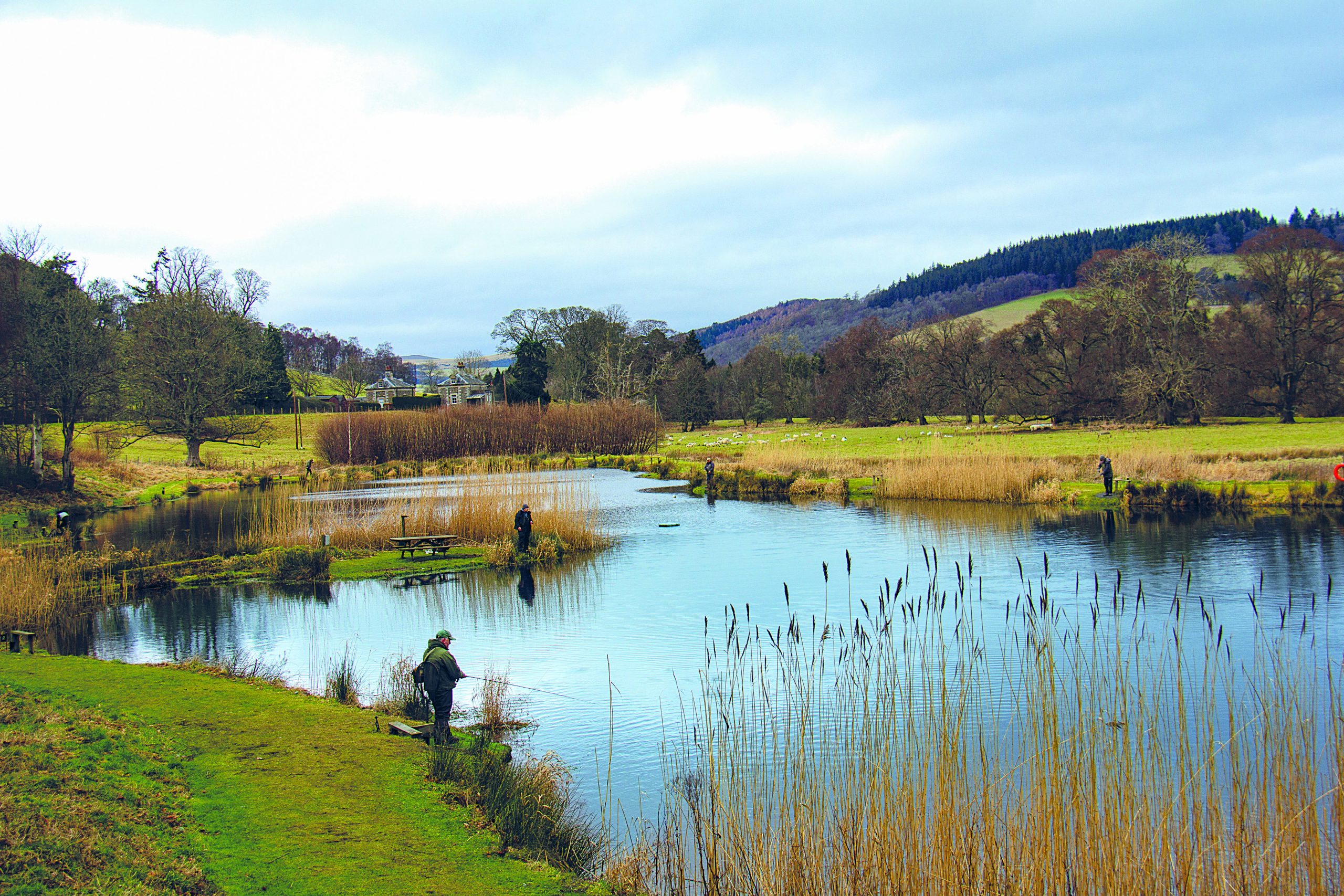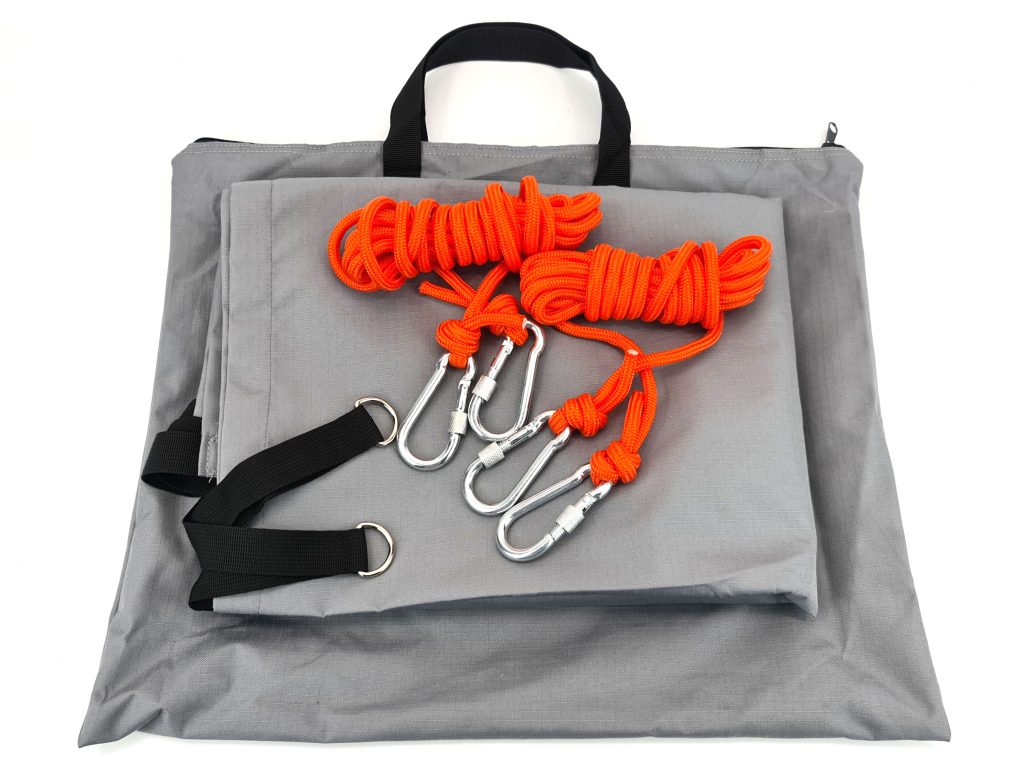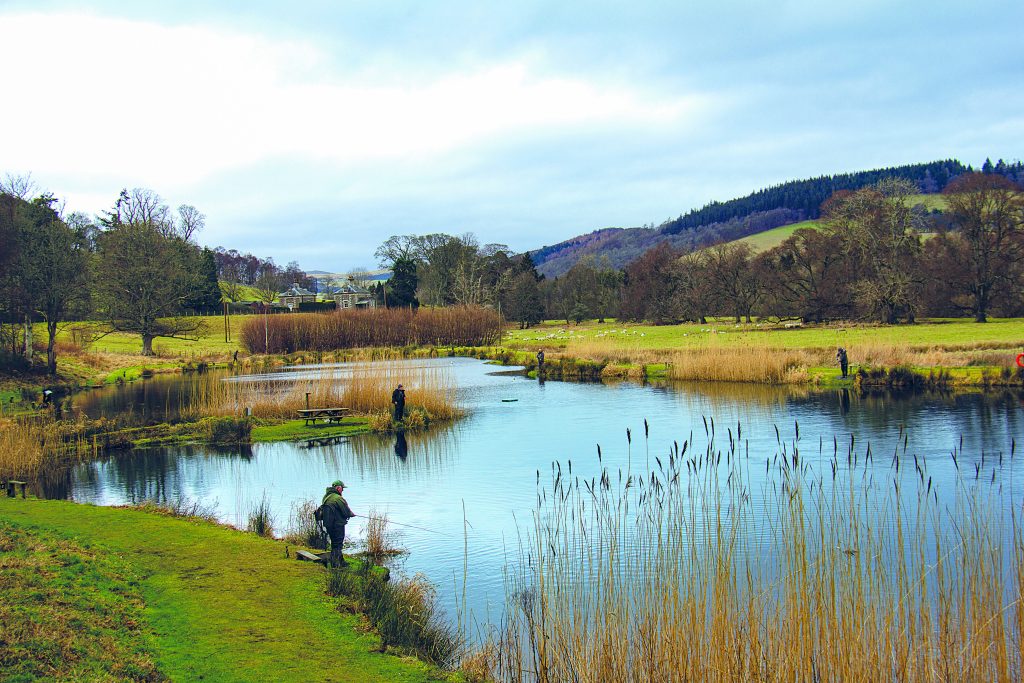How to become a better fly angler: lessons from the best
Andrew Flitcroft suggests ways you can become a better fly angler on stillwaters by observing top fisherman, adapting strategies, refining presentations and improving your waterside efficiency.
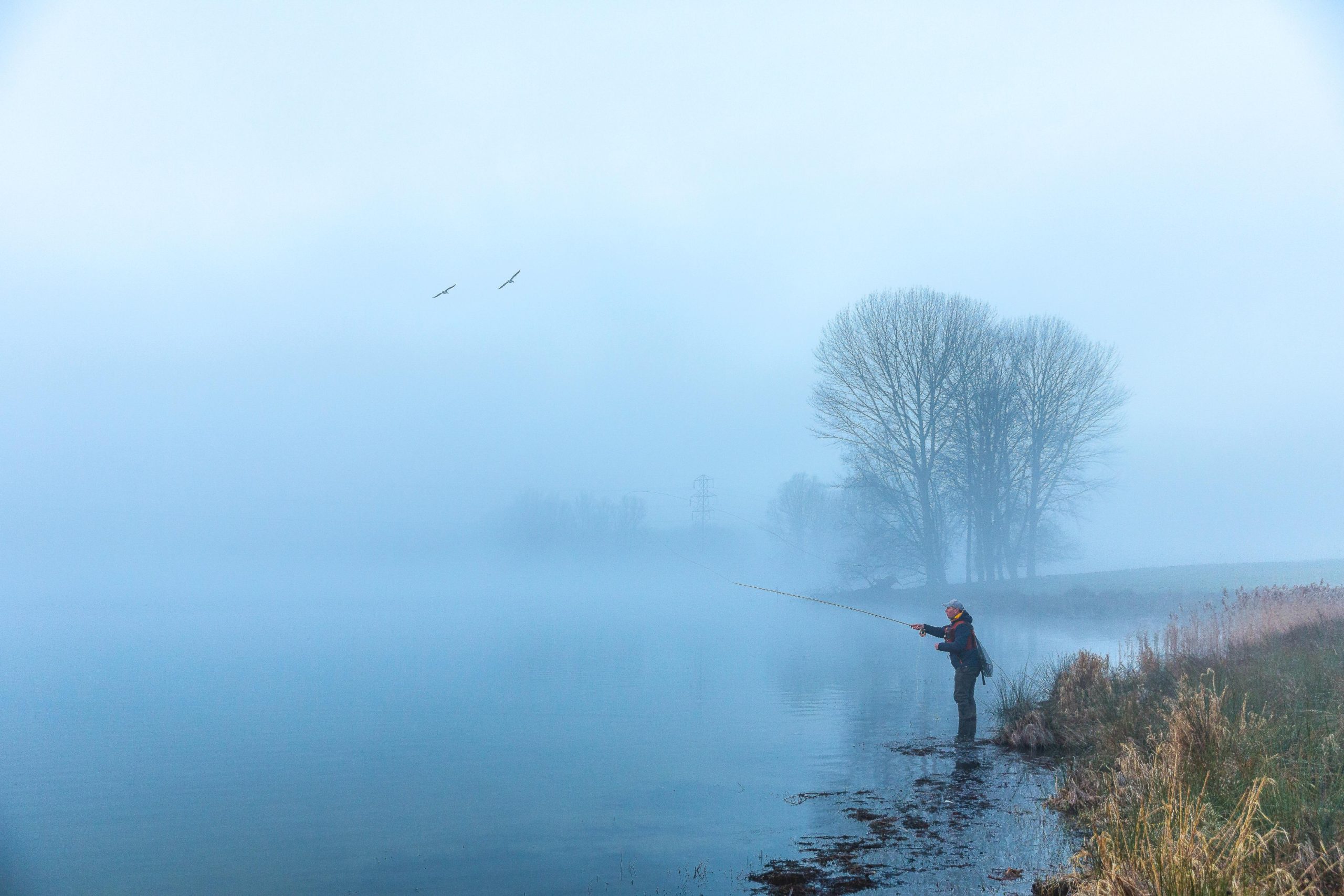
Adaptability: a key trait in how to become a better fly angler
Here’s another saying with more than an element of truth: “You can have all the flies and tackle in the world, but they won’t make you a better angler.” If there is a formula for success it probably includes a little luck, a thirst for knowledge and considerable skill. But I also think the most successful anglers have what appears to be a sixth sense — a feel for where fish will be, how they are behaving and why. Learning how to become a better fly angler often starts by developing this very instinct — to think like a fish.
While many of us are just happy to be on the water — casting, retrieving and taking in the surroundings — top-notch fishermen are not. They think differently. Their concentration is constant. Their attention to detail is exacting. If you want to know how to become a better fly angler, pay attention to these details — they matter.
If you’re ever frustrated by your inability to catch more than just the odd fish or you struggle in less than perfect conditions, I recommend you grab any opportunity to share a boat with a guide or leading competition fisher. I’m fairly sure you will observe and admire in your companion the following qualities.
How do they do it?
Imagine a beautiful spring day. The sun’s out, the wind’s off your back and casting is easy. You’re just happy to be on the water. But if you’re not catching anything, what do you do — just carry on in the hope that a fish comes your way using a method you favour? I can tell you the successful angler will already be thinking about making a change, if they haven’t made it already.
Their willingness to move location or switch flies, and to do so quickly, is crucial . We’ve all thought about moving to a different spot, or trying a different method, but many of us delay these decisions too long. It’s a slowness we belatedly regret when we discover the change has worked.
And yet we know change often works, don’t we? All of us have experienced feelings of renewed confidence when we switch to another fly, line or location. We fish better and more effectively … until our new tack proves unsuccessful and then our confidence wanes again. But the successful angler is rarely disheartened. They continue to use logic and the evidence of the conditions to change frequently until success comes again.
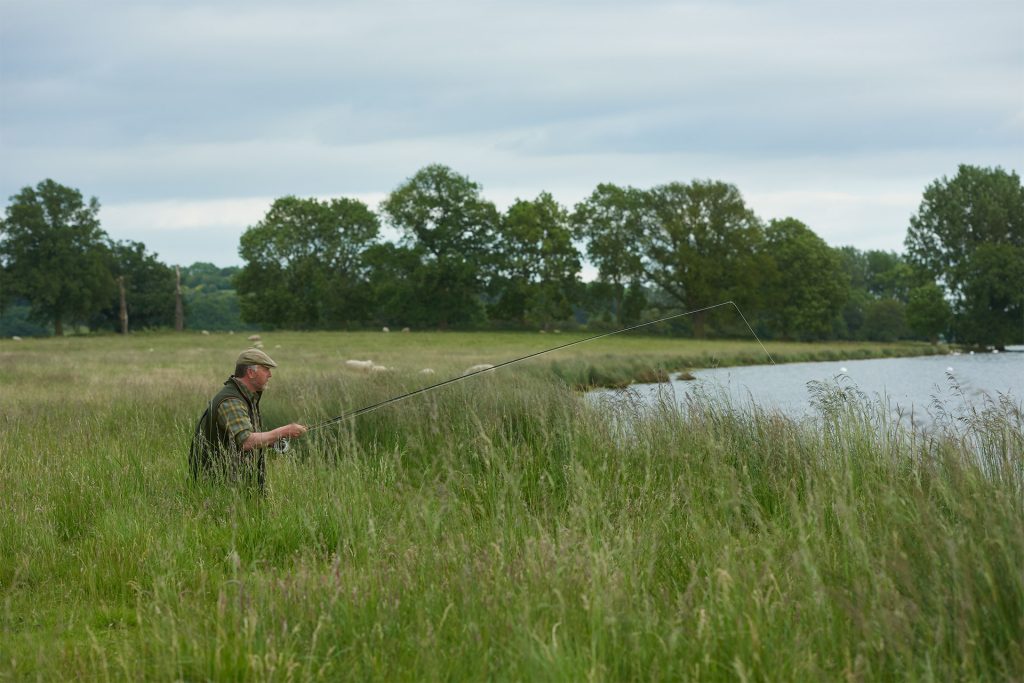
What stops many of us changing?
One reason might be knowing there are fish in front of us. Yet their presence doesn’t mean we shouldn’t move and find more willing takers. Or even return to a location we’ve fished earlier.
Here’s why. Trout usually have a peak feeding time. So, while they might not have taken your fly at 9 o’clock in Shrimp Creek, they will do so at midday. These feeding times may be hatch-related or dictated by weather conditions. A change in wind direction or strength may not only disperse food differently, but it can also offer cover, giving fish the confidence to take a fly and disguising flaws in our presentation. Along with light conditions, wind can also change the depth at which trout feed. Knowing this feeding depth is critical to success on stillwaters. That’s why so many types of fly-line and sinking rates exist. Knowing all of this can give you the impetus to adapt with more certainty.
Don’t fall for the easy option – elevate your fly fishing skills
When the decision’s been made to alter a set-up, some anglers will then take short-cuts. Better anglers don’t. For example, one of the biggest mistakes is to think that one density of line can be replicated by another simply by changing the leader length or type of fly. Take a midge or mini-tip set-up: the perceived wisdom is that a floating line and longer leader can achieve the same presentation, but it won’t. A mini-tip will dig into the water’s surface, anchoring your team of flies at depth while reducing the amount of drift, lift and instability associated with a full floating line. Nor will a standard Di5 sinking line with a Booby on the point fish in the same way as a Di5 sweep line with its depth-searching, curved path of retrieve.
Successful reservoir anglers understand these subtleties and will not only carry a vast range of lines but know how and when the time is right to fish them.
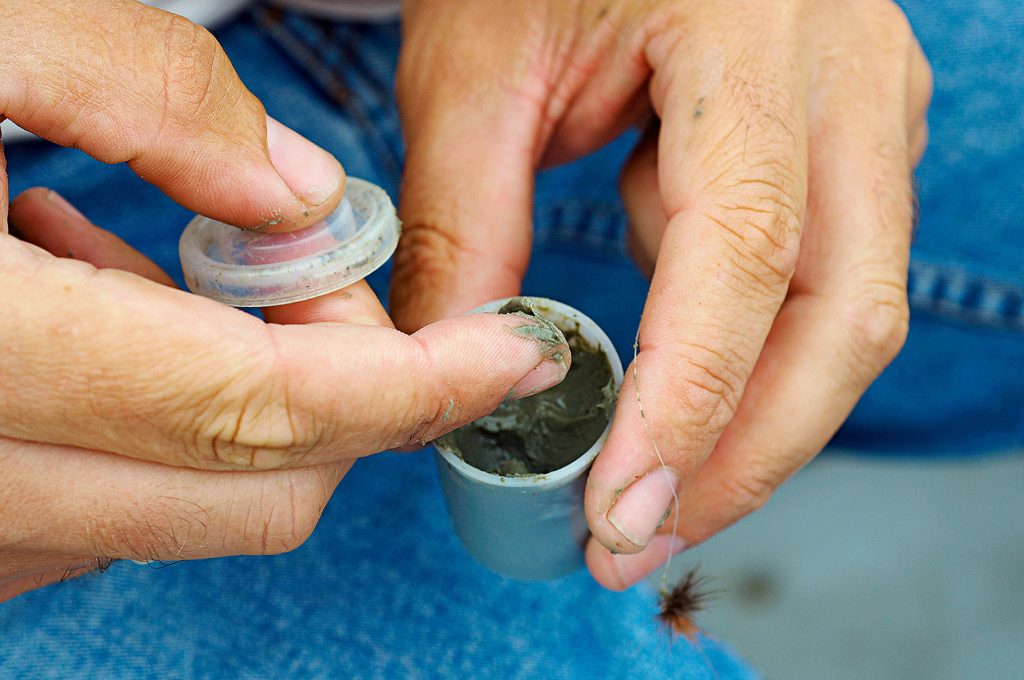
Flies should fall like a feather
Better anglers strive for perfect presentation, whether in the make-up of their leader or how their flies are delivered and fished. In a flat calm, a slight ripple or where there are pressured fish, they may reduce the chance of refusals or spooking fish by limiting the number of flies on their leader. Casting a team of three flies on to a flat surface multiplies the chance of putting fish down. Two flies should be fished as far apart as possible but using one fly may be the best strategy.
Having the confidence to fish with one fly has distinct advantages. Firstly, a lone fly will make the fish less suspicious and is therefore much more successful at attracting fish that are pressured or stocked fish that have naturalised. It also allows you to be pin-point accurate. By contrast, multiple flies can make your leader hinge, usually at the critical moment when you are covering a fish.
Better anglers pay attention to detail
When you fish a dry-fly in a flat calm, there is a danger your leader will be seen on the surface near the fly. Overcome this by regularly degreasing, no matter how long it takes. Making the effort is important whether you are using copolymer or fluorocarbon — otherwise either will struggle to penetrate the surface in a flat calm.
Conversely, greasing the first few feet of fly-line and the butt of the leader will not only reduce the number of missed takes caused by the whole leader sinking but will lessen the “noise” made as you lift it through the surface. It will also quicken the lifting of the fly-line off the water when you re-cast and re-cover a fish. These details may seem small and require effort, but the time spent is rarely wasted.
Yet still some trout may refuse your fly. This is when the better angler will either change to a smaller fly, or something that fishes differently. For example, the best stillwater dry-flies — such as a Bob’s Bits (with its hackles trimmed beneath), a Shipman’s Buzzer or a Big Red — sit very low in the surface film. The lower they sit, the more confidently the trout will take them. But there are occasions when an emerger pattern, such as a shuttlecock or parachute-style fly, whose abdomen sits below the surface, can fool fussier fish. Likewise, a simple change from a size 12 to a size 14 or 16 can make all the difference.
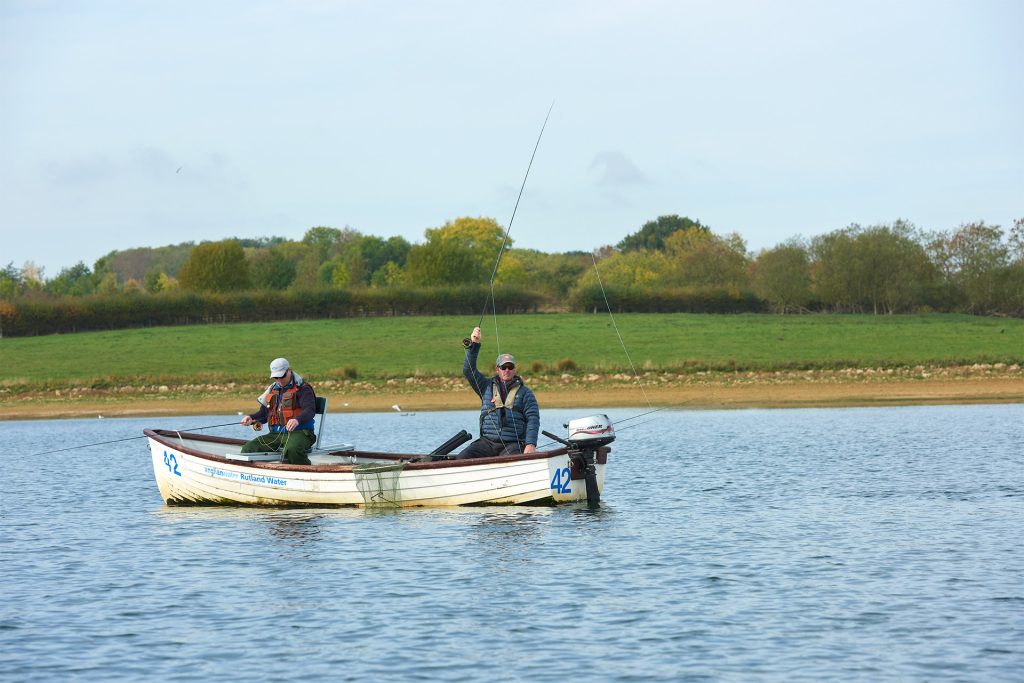
How to become a smarter fisher on a boat
Many anglers do not pay enough attention to the effect of drag on floating and sinking lines. Drag is caused by not having enough of the right kind of slack in the line to allow a fly to drift naturally. Wind and wave motion are the main causes.
When drifting from a boat, as the gap between you and your dry-fly narrows, any slack line on the water can come under tension from wind and wave action, and can drag the fly. Better fishers know how to keep their dry-fly drifting naturally by throwing small downwind mends that will absorb the effect of the wind and wave. From the bank, this drag can be avoided by casting across and upwind.
Experienced rods are also aware that when boats drift, the resulting fly-line drag affects anglers at each end of the boat differently. For example, the sinking flies of an angler at the bow may lift and fish faster and higher than their boat partner’s flies at the stern despite their both fishing the same line, leader and team of flies. Being aware of such things is a sign of a thinking angler.
He or she will also fish every hang with expectation, control and patience. They will continuously tweak the drogue to eliminate as much sideways drift as possible. When it comes to catching or not, these subtle differences count.
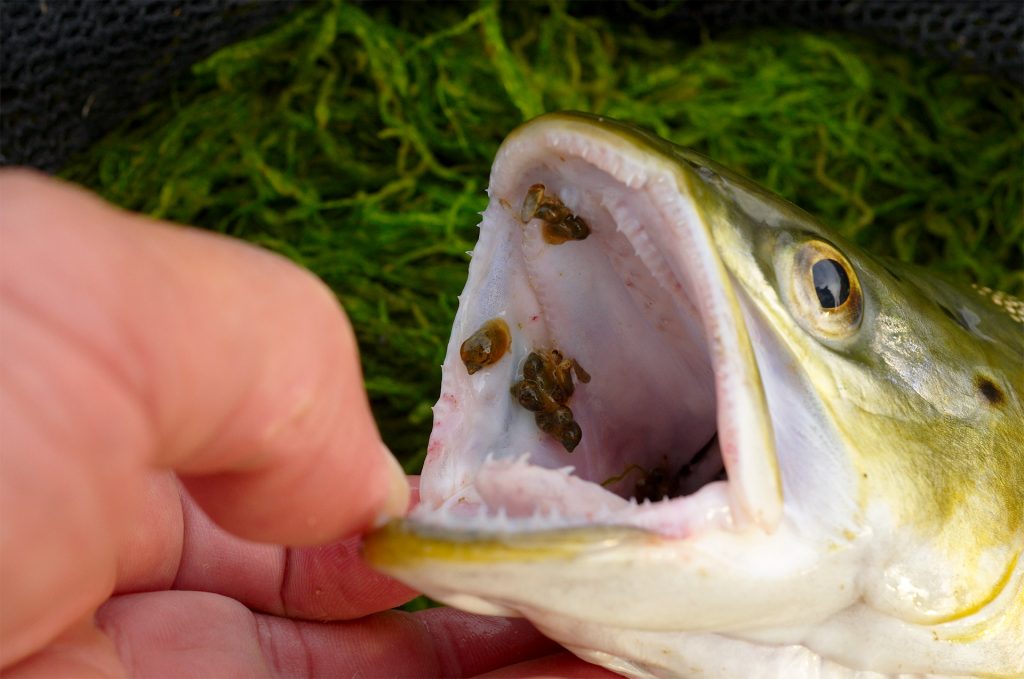
Close observation
Sadly, these days, when you ask someone what the fish are eating, the answer you’re likely to get will probably be the name of the fly pattern on which a fish has been caught. The dominance of catch-and-release has made one item of vital kit almost redundant — the marrow spoon. Anglers that purely fish catch-and-release don’t take advantage of the vital clues given by spooning a fish and have little idea what trout are feeding on at any given time. They’re missing out on crucial knowledge. A fish may have taken a buzzer, but was it feeding on buzzers? And if so, what size and colour, and how digested are they? The latter gives you a clue to when fish were feeding on a particular food item.
It’s likely that the fish will be feeding on the same food at the same time the following day. But if you’re lucky, the buzzers, shrimp or corixa you find will still be alive, which means the hatch or feeding activity is ongoing. The successful angler will gather as much of this evidence as possible.
Appearances can be deceiving
How often have you seen fish rising, but not known what they are feeding on? How a fish rises is revealing. Slower rises may indicate feeding on inactive or trapped food, such as snail, trapped and emerging buzzers, or spent (dead) insects.
More determined rises may be the fish taking active prey such as corixa, damsel nymphs and fry. Watch closely.
Better anglers also look carefully at the water’s surface. It can be possible to determine if a fish is rising to take a corixa replenishing its air supply at the surface, or a snail migrating on the underside of the meniscus. It’s possible to spot a hatch of tiny rape beetles or a sudden ant fall.
Time spent watching, without a fly on the water, is always worthwhile. Cut the motor and sit in the boat, waiting for activity. Or stand on the shore, away from the water. The most successful fishers are constantly vigilant and act quickly, knowing that their chance to capitalise may be fleeting.
Efficient anglers are better anglers
The work rate of many successful anglers is impressive to watch. They may not have much time on the water, but they spend it efficiently.
It pays to pick the right time to fish. Early and late, when the light is low, and the trout are rested and under less pressure, are often the best times on hard-fished waters.
When you are fishing, don’t rush around. Instead, concentrate on delivering fewer but better casts. Don’t cover a fish unless you know everything is right: that your leader is treated; that you’ve judged the correct lead (how far to pitch the fly in front of a fish); and that your flies are turning over properly. It’s better to abort and wait for an easier target than put every fish in the vicinity down.
Excessive boat activity and noise, wading and general carelessness can ruin your chances.
Consider why so many older fishermen sitting on stools on the bank are successful. By sitting on a stool and keeping low, they often catch more fish, which would otherwise be pushed out by wading.
A fish that knows you’re there is rarely a taker.
Finally, fish each cast out carefully, thoughtfully and patiently. Fish are often lost when we momentarily lose our concentration and rhythm. Better anglers rarely make that mistake.
Sharpen your skills by mingling with the elite
Learning from others is the best and quickest way to improve your knowledge
of fly-fishing.
Many stillwaters host clubs that hold friendly competitions where you can mix and even fish with the country’s finest anglers. Joining a club will also expose you to these experts through social events such as talks and fly-tying evenings. Chat to staff at your local water and they will point you towards the best club.
Many of the UK’s finest anglers are also fishing guides. They can be hired for a day and give invaluable one-to-one tuition.
Take every opportunity to meet and fish with experienced anglers.

